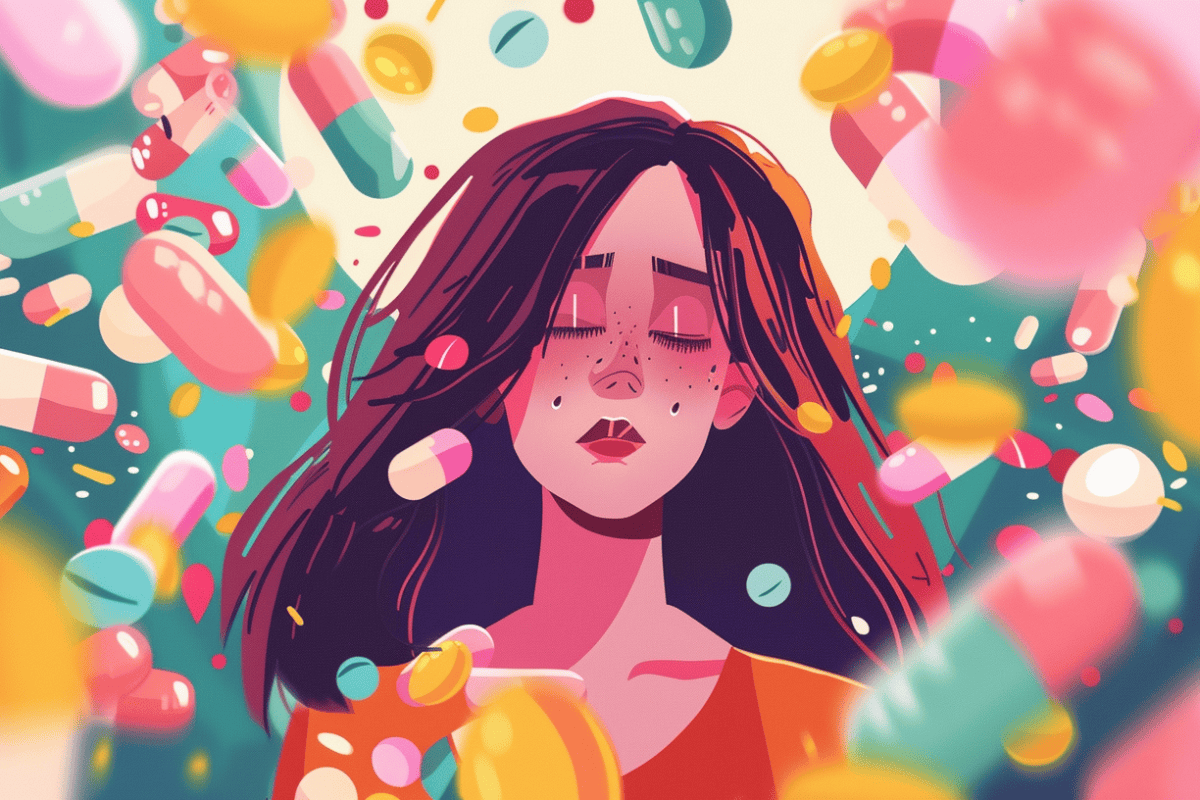Anyone taking opioids is at risk of developing an addiction. The time you’ve used opioids and health conditions that require you to use opioids plays a role in your opioid abuse. Whether prescribed or illegal, stolen or shared, opioids are responsible for most overdose deaths in the United States today.
Drug abuse is when someone begins taking drugs, either prescribed or not, until they can’t live a day without them. Opioid abuse can be prescribed as an intense craving for opioids. Opioids are highly addictive, meaning users are more likely to develop an addiction.
What Are Opioids?
Opioids, better known as narcotics, are a type of drug. Strong prescription pain relievers like tramadol, hydrocodone, oxycodone, and fentanyl are all examples of opioids. Heroin is also categorized under opioids. Opioids are either made from opium plants or synthetically made.
A doctor may prescribe opioids to relieve your pain following an injury or surgery. You can also get the over-the-counter if you’re in severe pain from health conditions such as cancer. Generally, opioids are used to reduce chronic pain. While opioids’ primary role is to relieve pain, they come with a fair share of effects. For instance, after using these drugs for quite a while, they can cause addiction, leading to their abuse. Here, we dig deeper into signs of opioid abuse and treatment options. Continue reading to learn more.
Signs Of Opioid Abuse
As earlier stated, opioids include prescription pain relievers and illegal drugs like heroin. While doctors may prescribe opioids for chronic pain or pain that follows surgery, their misuse can lead to dependency and addiction, known as opioid use disorder. Any individual prescribed opioids needs to follow their doctor’s guidelines to the letter. Ensure that you stick to the prescription without taking an extra one.
Opioid use disorder describes the inability to restrain yourself from using opioids and depending on these drugs daily. Most individuals with opioid use disorder depend on opioids and develop withdrawal symptoms such as cravings and sweating.
Nevertheless, some people can have opioid use disorder and not have a physical dependence. When an individual develops physical dependence, it’s challenging to cease using opioids, and the dependence might interfere with everyday life, including personal finances and relationships. If you or your loved one is struggling with opioid abuse, seek help from a reputable recovery center like Jackson House Recovery Centers to get the much-needed help.
A doctor diagnoses opioid use disorder or opioid abuse. However, some people with this disorder might not show symptoms, making it difficult for doctors to diagnose at first. Nevertheless, over time, people abusing opioids show the following signs:
1. Uncontrollable Cravings
Most individuals with opioid use disorder develop uncontrollable cravings. The cravings affect their daily routine since they can’t do anything unless they take these drugs.
2. Weight Loss
Opioids cause symptoms like constipation, nausea, and vomiting, resulting in a lack of enough nutrients causing an imbalance in electrolytes. Vomiting and nausea can also affect one’s appetite, leading to weight loss. Additionally, opioids might reduce the user’s metabolic rate, affecting appetite and later weight.
3. Inability To Control Opioid Use
After using opioids for a prolonged period, the user is unable to control the use. At times, the user might take these drugs even without a tangible reason, such as pain.
4. Decreased Libido
Decreased libido is a term that describes decreased sexual function or lack of interest in sexual activities. This symptom is common in people with opioid use disorder since these drugs affect hormones in the hypothalamic-pituitary-gonadal pathway. Opioids interfere with sex hormones by secreting gonadotropin-releasing hormone (GnRH), making the user not interested in sex.
5. Change In Sleep Patterns
Like other drugs, opioids affect the user’s sleeping habits regarding the time they take to sleep, how long they will be asleep, and general sleep quality. Most opioid users are more likely to experience insomnia, especially during withdrawal. This can increase their cravings and anxiety levels, making the issue even worse.
6. Isolation From Friends And Family
Individuals abusing opioids love spending time alone. They are more likely to exclude themselves from family dinners, gatherings, or going out with friends. This might be caused by the fear of being judged or noticed, especially if they take opioids now and then.
7. Changes In Exercise Habits
Another sign of someone abusing opioids is a change in exercise habits. For instance, an individual could have been an exercise enthusiast until they started abusing opioids and vice versa.
8. Lack Of Hygiene
Most opioid abusers are more likely to lack hygiene. They are more likely to spend time in cluttered houses due to their inability to perform daily chaos.
9. Financial Difficulties
Opioids abuse is a severe condition that can affect one’s financial stability. Since opioid abuse causes addiction, individuals are likely to spend more on these drugs without even noticing. They find themselves deep in debts and other financial challenges in the long run.
10. Frequent Flu-Like Symptoms
Opioids users experience frequent flu-like symptoms: runny nose, muscle aches, and sweating. It’s easy to mistake these symptoms for typical flu while it’s withdrawal symptoms in reality. If you experience such symptoms, you’re more likely to be dependent on these drugs and likely to be addicted.
11. Stealing
After having financial difficulties, opioid abusers tend to steal from loved ones or businesses to pay for the drugs. Also, if they’re deep in debt, they’ll likely develop a way to pay their debts, even if it means stealing.
Treatment Options For Opioids Abuse
There are different options for opioid abuse treatments through medication-assisted treatment. These types of medications effectively treat opioid use disorder and reduce inpatient detoxification. These drugs are Food and Drug Administration (FDA) approved to be used in conjunction with counseling and behavioral therapy.
If you’re struggling with opioid use disorder, consult your doctor to discuss the right treatment option. Ensure your doctor is a qualified psychiatrist, physician, psychologist, or nurse. The medical practitioner will ask about your opioid history, mental health history, medical conditions, and financial considerations during the consultation.
Here are some medication treatments for opioid use disorder:
Methadone
This is a controlled medication used to reduce craving and withdrawal symptoms while blocking opioids effects. Methadone is taken in either liquid powder or tablet form. This medication is administered under the physician’s supervision through a certified opioid treatment program.
In most cases, methadone is dispensed in clinics, but you might be permitted to take a few doses home based on your stability and program adherence. While treatments vary from patient to patient, the minimum treatment period is 12 months. However, the treatment period might be prolonged based on the severity of the opioid use disorder.
Your doctor will reduce your dose by bits to prevent withdrawal when completing the treatment. If you experience symptoms such as pounding heartbeat, confusion, chest pain, difficult breathing, rash, or lightheadedness after your treatment, consult your doctor immediately.
Naltrexone
Naltrexone is a medication used for substance use disorders treatment. This medication blocks the opioids’ euphoric effects. Unlike other opioid medications, naltrexone doesn’t activate opioid receptors but instead blocks opioid receptors, reducing the risk of misuse.
Naltrexone is administered monthly in injection or pill form. It can be administered by any licensed health practitioner, unlike buprenorphine and methadone, which require special licensing.
Before receiving naltrexone, a patient must have completed managed withdrawal from opioids at least seven to ten days earlier.
Naltrexone doesn’t come without side effects. The common side effects associated with this medication include diarrhea, headache, vomiting, upset stomach, nervousness, trouble sleeping, and muscle or joint pain. If these symptoms persist, seek medical attention as soon as possible.
Buprenorphine
Buprenorphine is also a medication used to reduce cravings and withdrawal symptoms. Buprenorphine is the first treatment medication prescribed and dispensed by licensed doctors. A qualified doctor administers buprenorphine during the early stages of withdrawal during the induction period. The drug’s effect and cravings are significantly reduced in the stabilization period. Depending on your state, the doctor may adjust or reduce your dose.
The patient is on a steady dose of buprenorphine in the maintenance phase. The maintenance period varies and might be indefinite. Buprenorphine produces weak euphoric effects when administered in low doses. Since this might increase the chances of misuse, buprenorphine is combined with naloxone to reduce withdrawal effects.
Buprenorphine might cause side effects such as fever, craving, nausea, constipation, vomiting, trouble sleeping, irritability, and muscle aches. If these symptoms persist, notify your doctor.
Conclusion
Opioids should be prescribed or used under a doctor’s supervision to reduce chronic pain. However, after using them for a while, the user craves and depends on them. Without on-time intervention, the user can develop an addiction that might be hard to treat. Unfortunately, opioid misuse causes countless overdose deaths in the U.S. To avoid being an opioid addict, consult your doctor immediately if you feel that you can’t go a day without them.
The doctors will help you until you feel better and no longer depend on opioids. Remember, if your doctor prescribed opioids for your pain, ensure to adhere to their guidelines and stick to the prescription.
Digital Health Buzz!
Digital Health Buzz! aims to be the destination of choice when it comes to what’s happening in the digital health world. We are not about news and views, but informative articles and thoughts to apply in your business.


